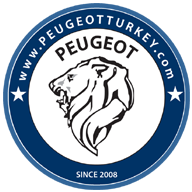Do not use aggressiveIn aggressive driving, up to three times more fuel is used compared to moderate driving. Avoid too hard gas or brake, especially in city traffic. Use in high gears. The higher the gear, the lower the engine speed. This can improve fuel efficiency. Vehicles with automatic gears switch between gears more quickly if the driver releases the accelerator pedal slightly when the car has achieved sufficient acceleration. The gear shifting in vehicles should be around 2000-2500.Do not overdrive - the faster the car goes, the more wind resistance it encounters. Going only 8 km / h faster than the speed limit increases fuel consumption by 23 percent. On some vehicles, fuel consumption at a speed of 130 km / h is almost twice as high as 80 km / h. Maintain the engine A well-tuned engine can improve fuel economy by up to 4 percent. Always follow the manufacturer's recommendations on oil and maintenance. Tire pressure is important Correctly inflated wheels also reduce the amount of energy required to keep the vehicle moving. Inflated to just under 69 millibars, a tire can reduce fuel efficiency by up to 3 percent. For this reason, do not carry unnecessary items in the trunk and rear seat. Remove the roof rack. If the roof rack or roof bars are not used, it must be removed. These negatively affect the vehicle's aerodynamic effectiveness, reducing fuel savings of up to 5 percent on the vehicle. Turn off the engine until you need to drive while waiting in a queue or waiting for someone. Use air conditioning sparingly The air conditioning system puts an additional load on the engine and uses extra fuel during use. Use ventilation instead of turning on the air conditioner on warm days. Check the air filter Replacing a blocked air filter helps to protect the engine while at the same time increasing fuel savings by up to 10 percent. . Also, increase your speed a little before reaching the starting point of a hill, and then let the speed up the vehicle without the need to run the engine harder. Do not get off the ground in idle. The engine detects that fuel is not required for its operation, and cuts off the fuel completely, so it is possible to descend with zero fuel consumption depending on the slope. When the vehicle is idle, it consumes more fuel. Peugeot 308 HDi broke an automatic fuel record. Peugeot's two 308 1.6 HDi 110 hp models with 5-speed manual and new 6-speed automatic transmission traveled from Istanbul to Antalya with an average of 3.5 liters / 100 km of consumption. .Geç year to Antalya average of 3.68 l / 100 km commuters with consumption after 407` with the 1.6 liter HDi engine at 110 horsepower Peugeot this year perform the same test again with two transmission options 308 models under the supervision of Turkey Automobile Federation. The first of vehicles participating in the test, the new 308` in Turkey since the launch of the sales manual transmission, the 1.6 HDi 110 bhp modeliydi.ikinc model is in Turkey for the first time, which will be sold 1.6 Hdi named as Auto6R new 6-speed automatic transmission is less than modeldi.manuel yaktıklasik automatic Geared vehicles generally consume more fuel and their performance is slightly lower. To prove that this new gearbox consumes as much as a vehicle with a manual gearbox in real conditions, Peugeot tested this new version with another version with the same engine with manual gearbox. The two vehicles went one after the other along the 1393 km road. In this test of 1339 kilometers, the 308 1.6 HDi with manual transmission achieved a successful result by consuming an average of 3.59 liters of diesel per 100 kilometers. The 1.6 HDi Auto6R with a 6-speed automatic transmission achieved even lower fuel consumption on the same road and burned an average of just 3.45 liters of diesel per 100 kilometers. The tank of both vehicles has a capacity of 60 liters. Manual 308 burned 50.11 and automatic gear shed 48.16 liters along the way. The new 308 Auto6R model with 110 hp HDi turbodiesel engine is sold at a turnkey price of 39 thousand 270 YTL.





 djchaos
djchaos istanbullu_3886
istanbullu_3886